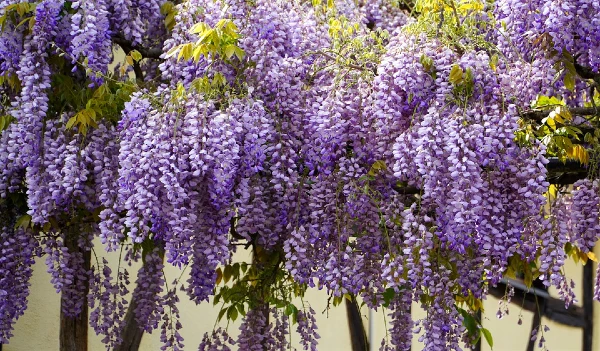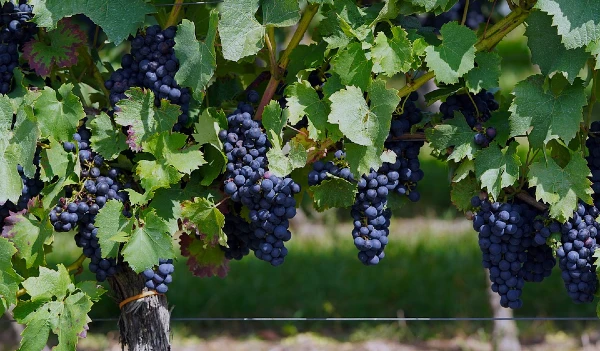Do you feel restless from being stuck inside for too long and not being able to do the one thing you love the most? Are you counting the days until the chilly British winter passes so you can get back to work in your beautiful outdoor garden?
Well, we have some excellent news for you!
You are not alone in this! Just like yourself, many other gardeners experience this restlessness over the winter months (some call it the “cabin fever”). And more importantly, there are plenty of gardening jobs to do in February.
So you needn’t wait for the temperatures to rise to feel alive again and do something productive in (for) your garden.
? February Gardening To Do List : Quick Overview
Before we dive into the details, here are some of the most important tasks you should add to your February garden to-do list:
- Plan your gardening strategy, organise and label all your seeds and bulbs.
- Organise and clean your gardening tools, clothes and equipment.
- Test and prep your soil by removing weeds and debris and adding compost if necessary.
- Prepare, clean and warm up your seed beds.
- Prune and trim the shrubs and trees according to what care they need.
- Spend some time taking care of your hedges.
- Reorganise your garden space, move shrubs and trees while they are dormant.
- Sort and divide your bulbs, start germinating some of your seeds.
- Take care of your birdhouse and bird feeders to attract some wildlife to your garden.
For successful start of the season, follow our February gardening to-do list with some ideas, especially for all of you restless green thumbs.
1. Plan And Organise

Okay, we know we promised to give you ideas of what to do outside… But let’s first think about the rainy, foggy, snowy days in February (which are pretty standard here in the United Kingdom) when you won’t be able to spend time outdoors in your garden.
If you haven’t done it yet, spend a few days outlining your gardening strategy for this year. February is an excellent time to:
- Rework your garden’s border schemes and draw a garden plan.
- Plan for a good crop rotation throughout the year to prevent pests and diseases building up in the soil.
- Create your lists for plant purchase in spring.
- Order, label and organise your seeds and bulbs by sowing date.
Planning, making lists, labelling… not the same as getting your hands dirty, we know. Still, when the sun finally smiles on our otherwise gloomy horizons, you will be glad you actually carved out the time to do it.
2. Organise And Clean Your Gardening Tools

If you didn’t clean and organise your tools and gardening equipment last autumn, make sure to:
- Check if your tools and garden machinery still work well or you need to buy new ones.
- Wash your empty pots.
- Sharpen your tools.
- Sort and clean your canes and plant supports.
- Get some new gloves and aprons, if the old ones have worn out.
- Clean and service your garden mowers and power tools.
After all, there’s nothing more annoying than getting all excited to go out and chase the last remnants of the winter away… only to find out that you need to spend a day or two getting your equipment work-ready. Think about it 😉
3. Test Your Soil, Remove The Weeds and Debris, Add Compost

When the weather allows, and the ground is not frozen, take the time to:
- Remove any remaining plant debris and tidy up your plant beds to make them clean and ready for the spring.
- Root out the weeds and remove the fallen leaves.
- Get a soil testing kit to find out what type of soil you have (acidic, neutral, or alkaline). This is important to know if you are planning to plant something that needs specific soil conditions.
- You can add some slow-release fertiliser around the base of rose plants and other shrubs.
4. Prepare Your Seed Beds

When the soil is clean and ready, make your seedbeds. Don’t forget – you now have a brand new garden plan. Follow it.
To prepare the seedbeds for sowing in the coming months, you can warm up the soil with sheets of black plastic, fleece or cloches.
5. Prune

February is also a great time to grab your secateurs, loppers and saws and get pruning.

We know you adore wisteria due to its long colourful cascades of flowers. If you don’t have one in your garden yet, autumn or spring is the best time to plant wisteria. If you already have one and didn’t prune it in January, make sure to do it before the end of February.
Pruning your beautiful wisteria is necessary twice a year (July/August and January/February) to promote flowering and keep it in the desired size and space. Cut back laterals and side shoots to within 2-3 buds of the main stem.

If you have grapevines, you know that the primary pruning time is late in November or throughout December. However, if you haven’t pruned your grapevines yet, do it as soon as possible, or there is a greater chance to weaken the plants and cause the vine to bleed sap. Also, it would be best if you shortened last year’s fruited shoots to encourage new growth.
Trim and prune your winter-flowering plants and shrubs (such as jasmine, heathers and mahonia) to encourage growth for next winter’s blooms and prevent plants from becoming leggy.
If you didn’t prune your roses and other summer-flowering shrubs (such as late clematis and buddleias) in autumn, at the end of February is still a good time to do it. Make sure to always cut them just above a bud. That way, a new stem will come from that bud. At this time, there is no need to prune early spring flowers and winter clematis varieties.
Avoid pruning shrubs that bloom after mid-summer (such as caryopteris, fuchsia, perovskia, spiraea japonica), as it may lead to frost damage new shoots.
Late winter is also an excellent time to hard prune coloured-stemmed shrubs (such as Cornus, salix cultivars and rubus) by cutting them down to their bases and to coppice some trees (such as eucalyptus, Cercis, paulownia, cotinus and catalpa).
Finish with the winter pruning of fruit trees and soft fruits (such as apple trees, pear trees, autumn raspberries, gooseberries, redcurrants and blackcurrants). To avoid silver leaf disease, don’t prune your plums, cherries, and apricots trees until summer.
6. Work On Your Hedges

If you have some new hedges, you know they will require some formative pruning in the first couple of years after planting. It can be carried out in winter (or early spring).
The weather in Britain in February and March is also a good time to:
- Plant most bareroot hedging.
- Prune hardy evergreen hedges.
- Trim and renovate overgrown deciduous hedges before birds start nesting.
If it snows in February and March, make sure to sweep the snow off your young hedges as soon as possible.
7. Reorganise Your Garden

If you plan to reorganise your garden space, February is the right time to do it if you plan to reorganise your garden space since most of the shrubs and trees are dormant.
Note: don’t move your plants if the soil is frozen or waterlogged.
8. Divide And Plant Your Bulbs & Start Some Seed

Divide large clumps of bulbs (such as snowdrops) and plant those that need planting ‘in the green’. If you have any summer bulbs (such as lilies, Liatris, begonias, eucomis, and gloxinias), you can plant them in pots indoors.
You can also start seeds of warm-season vegetables and flowers indoors.
9. Add A Bird House Or Clean And Fix The Old One

Some of the most popular and beautiful birds you can spot in your British garden are the Robin, the Great and Blue Tits, the Goldfinch, the Chaffinch, the Wood pigeon, and the Starling.
If you want to attract some wildlife in your garden, take the time to fix your birdhouse (or instal a new one), defrost the birdbath, and keep your bird feeders topped up.
For more UK gardening tips, make sure to follow Hydrostork’s Facebook page.


Great content! Super high-quality! Keep it up! 🙂
Great article!
This is great!